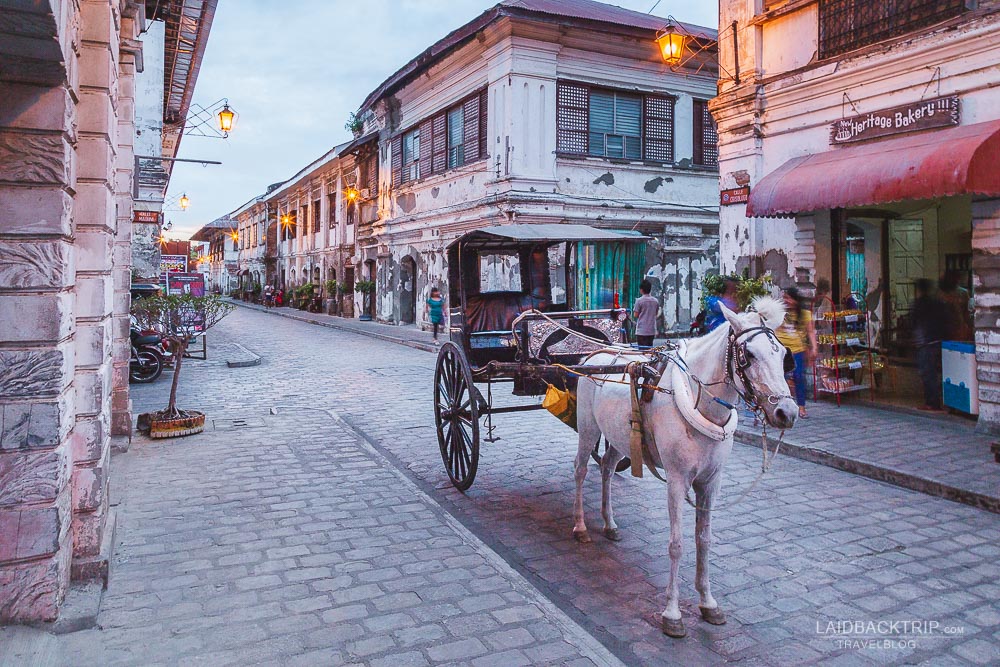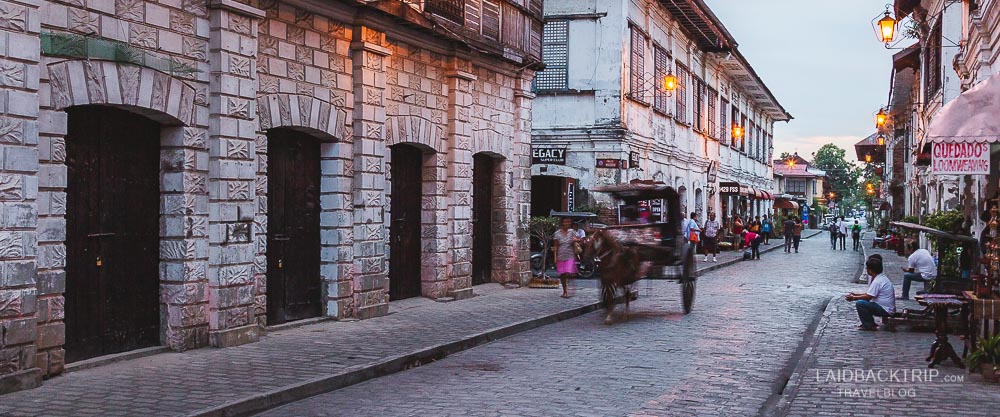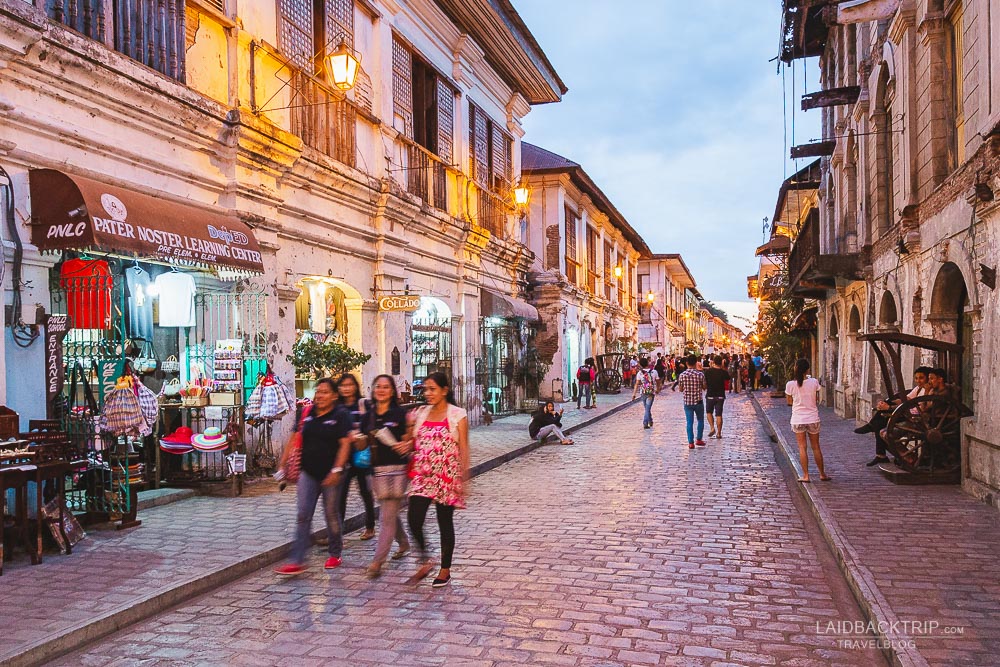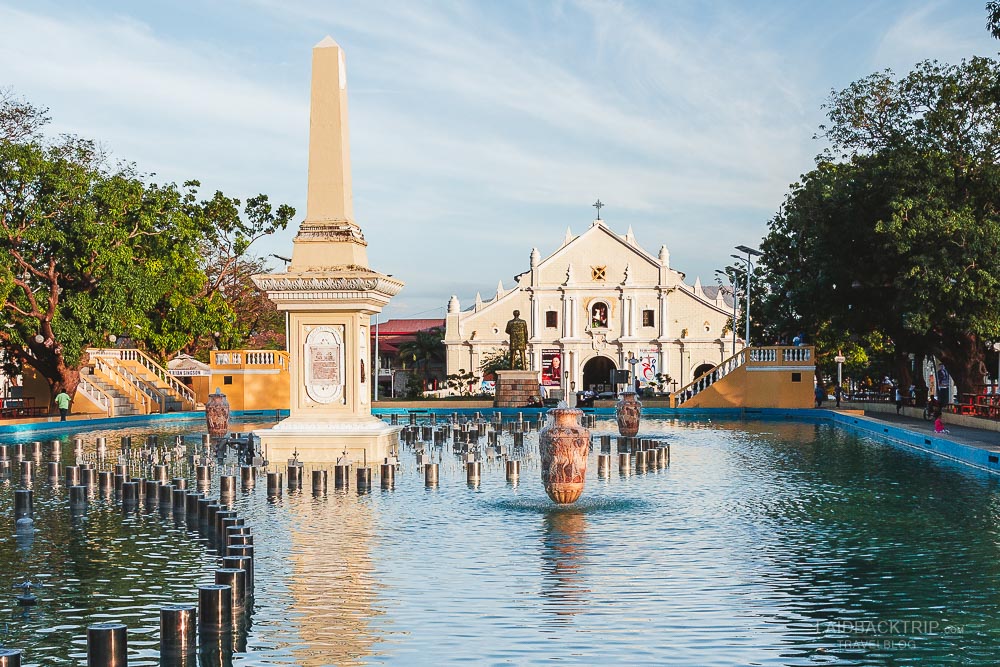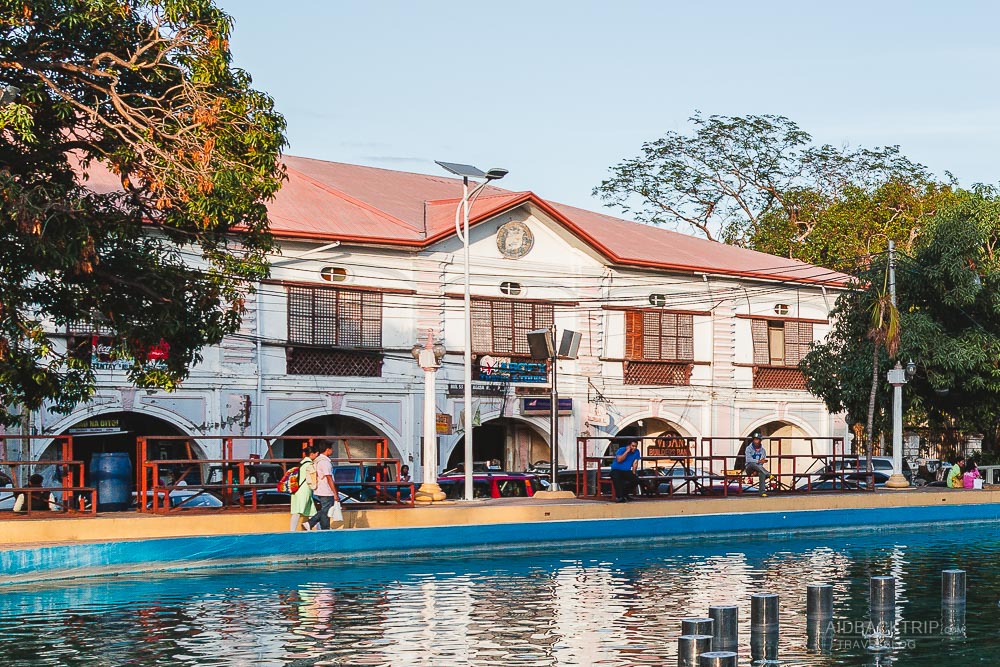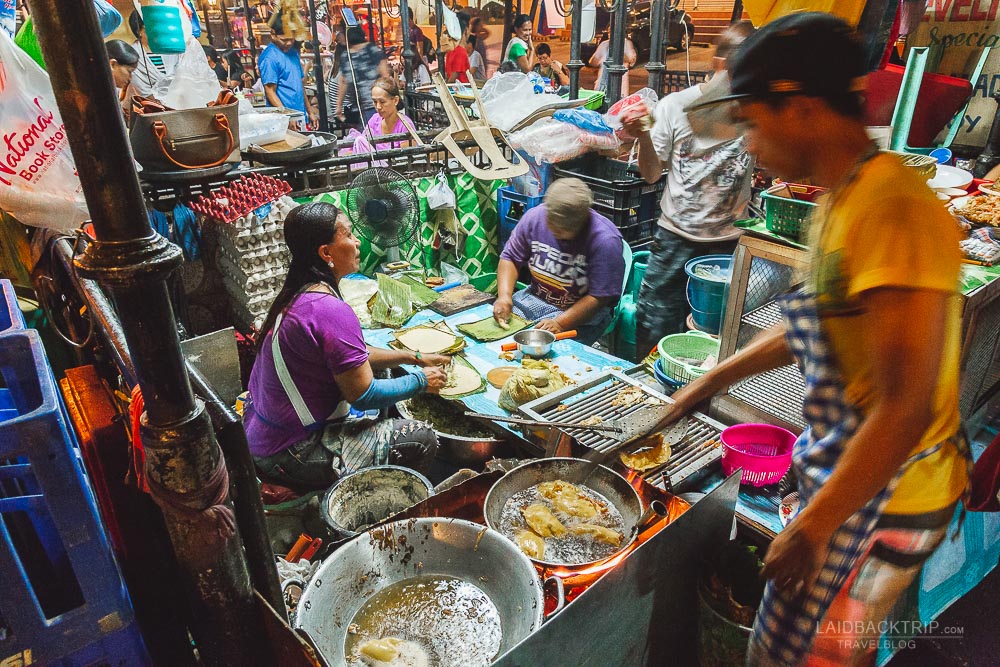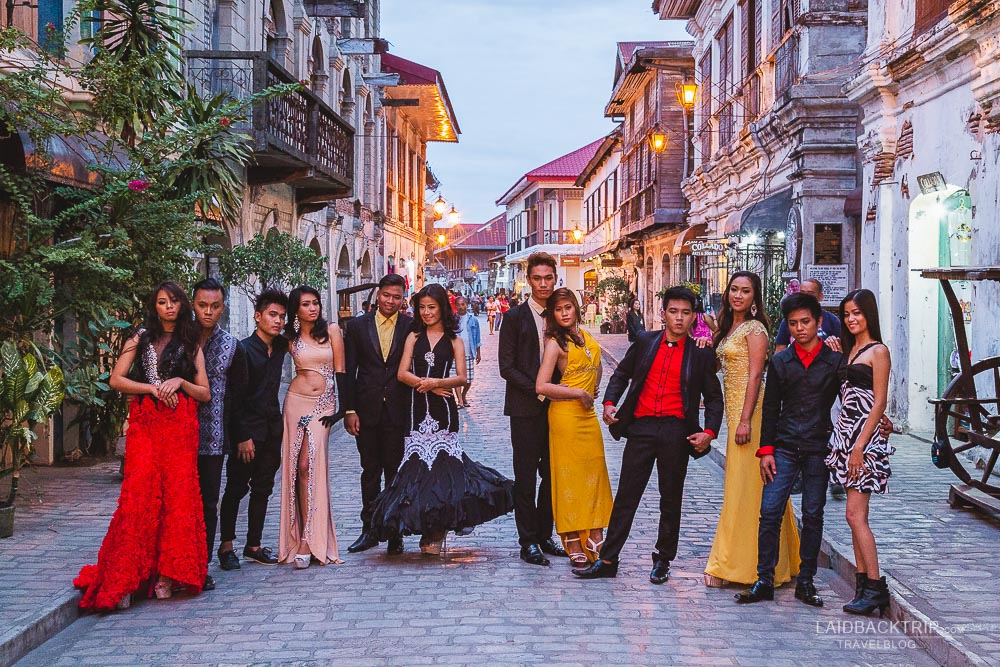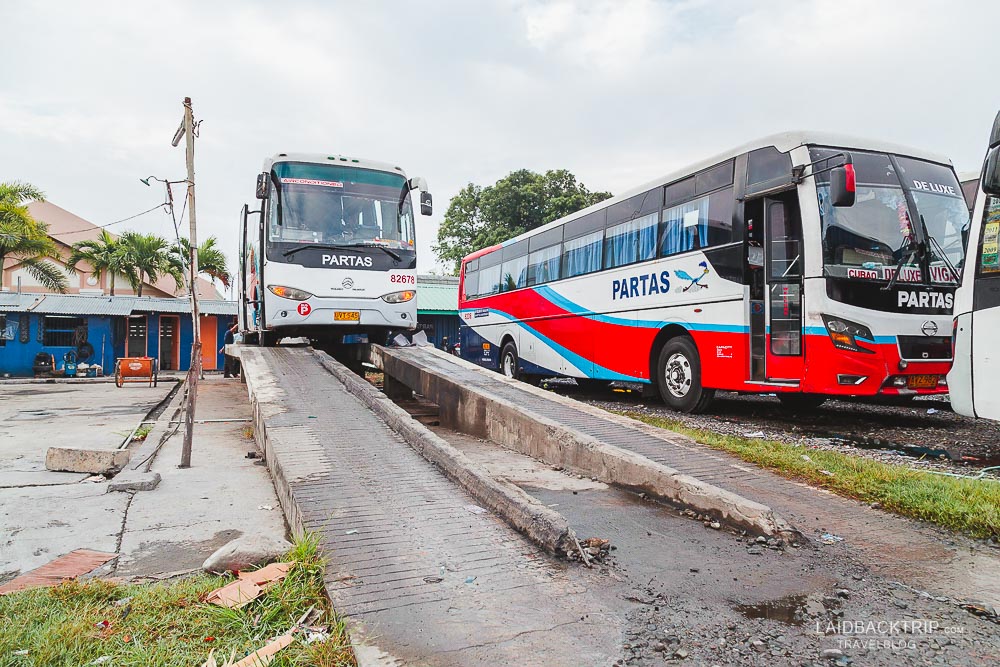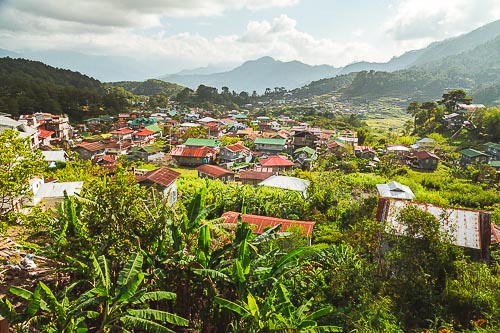Vigan Guide: Visit A Colonial City In Philippines
Immerse yourself in a colonial time and travel to Vigan, the capital of Ilocos Sur in the Philippines. Our travel guide includes best things to do, what to see and tips on where to stay.
Vigan, the UNESCO colonial city, the capital of Ilocos Sur province located on the western coast of the island of Luzon in the Philippines features well-preserved Spanish-era architecture and every year attracts more than a million of local and foreign visitors.
Vigan is a small city charmingly combining the colonial and peaceful atmosphere you will unlikely find anywhere else in the Philippines with traditional noise and buzz of Asian cities.
There are at least three main reasons why you should consider to visit Vigan. Firstly, Vigan is the best-preserved planned Spanish colonial city in Asia and is a part of the UNESCO World Heritage List; secondly, the cobblestone streets of well-restored Calle Crisologo are traffic free which is such a relief when traveling in Asia so you can focus only on sightseeing and do not worry about your life all the time;and thirdly, fresh empanadas on the night market are too good to give Vigan a miss.
In a nutshell, if you're traveling north of Manila and want to explore the Philippines from a different perspective, Vigan is a right place where to start as the country is not only about beaches and rice terraces.
A BRIEF HISTORY OF VIGAN
Vigan City used to be a peninsula when Mestizo River had separated city from the mainland but after the river's mouth have silted up, Vigan is part of the Luzon's island mainland.
Because of its coastal position, the settlement was well-known among Chinese traders and merchants and become an important trading post. The busy port and the strategic location, of course, did not go unnoticed so in the late 16th century the city was "officially" discovered by Spanish explorers who quickly took possession of Vigan.
Since then, Spanish took the lead in Vigan.
Augustinian missionaries arrived in the region to spread evangelization, new inhabitants started to build houses in colonial style and overall, the way of life and the atmosphere in the city changed significantly. Vigan grew under the Spanish control and became a political, cultural, commercial and religious center of the north.
Since the mid-18th century, indigenous people were attempting to free themselves from Spanish influence, but all attempts were unsuccessful. In 1941, at the beginning of WWII Vigan was invaded by Japanese and was liberated only till 1945 when Ilocano resistance fighters defeated the Japanese Imperial forces.
THINGS TO SEE AND DO IN VIGAN
In Vigan, you can for sure follow the list of must-see places, but what we found to be the best, was to walk around and observe the way how the city was formed as it also reflects history and demography of Vigan.
It is interesting to watch how streets and architecture slowly change from the colonial, European-like to the Chinese and Filipino-like buildings in the rest of the town.
CALLE CRISOLOGO
If you want to get an idea of how cities in the Philippines or Asia overall looked like during the Spanish invasion, you won't find a better example then the Calle Crisologo in Vigan, Ilocos Sur.
Spanish-style buildings line the cobblestone street, and with no vehicular traffic, you will be accompanied only by fellow visitors and horse-drawn carriages. Houses along the Calle has undergone a restoration, and most of them now serve as souvenir shops, hotels or restaurants, but they still keep the middle-age atmosphere thanks to the preservation of red-tiled roofs, thick walls, ornated doors and staircases leading to rooms of high ceilings and sliding capiz shell windows.
The best time to walk Calle Crisologo is before dusk when lamps lit, and the street gets savor of sentiment.
ST. PAUL METROPOLITAN CATHEDRAL
The church sits right on the main square of Vigan city and is also part of UNESCO World Heritage Site declaration.
Since the foundation in the 17th century, the church has gone through many disasters and was destroyed by earthquakes and fires. Because of that, cathedral must've been restored many times already, and the present-day resemblance is from the 18th century.
PLAZA SALCEDO
Vigan's main square serves as a gathering point and a place, where everyone meets before going to church. Plaza Salcedo has the typical urban Spanish design with a statue of the Spanish conquistador Juan de Salcedo right in the middle.
A picturesque lagoon in the center was added to the city plans in the seventies not only because it creates beautiful reflections and makes the plaza more charming, but it can also serve as a water reservoir in case of fire.
VIGAN PUBLIC MARKET
No need to hide it, we are market freaks. Public markets in Asia are so photogenic that we can easily spend there a ridiculous amount of time, and the extensive market in Vigan was no exception. Also, the best meals we've had usually came from no-name food stalls with a questionable appearance.
You can find here a great mix of all food from fruits, veggie, seafood, meat, and herbs and you shouldn't leave Vigan before you try empanadas.
Travel Insurance
We never leave home without travel insurance that was designed to cover our expenses if something goes wrong during the trip.
Travel insurance protects against theft, flight delays, injury, illness, cancellations, and much more.
World Nomads provides travel insurance for travelers to cover their trip essentials, including sports and adventure activities.
SafetyWing is affordable travel insurance for backpackers, long-term travelers, and digital nomads.
Travel smarter and safer!
FESTIVITIES
The Philippines is a vibrant country, and Filipino people love to celebrate whatever and whenever they can. All festivities have one in common. Good food, music, lively atmosphere, and dance. We visited Vigan on January 25 when The Vigan City Fiesta takes place, and it was an unforgettable experience.
If you're visiting Luzon in January, try to move things around and visit Vigan on that day. Also, Filipinos are known as huge fans of beauty competitions so we could watch all preparations and photo shootings of their own local Miss which was taken more than seriously.
WHERE TO STAY IN VIGAN
Vigan is a small city, but you can find here an accommodation to suit every budget. Here are our top picks:
Budget | EA Apartelle - Metro Vigan - This well rated hotel is a little bit out of the center, but the service, good wi-fi, terrace, and the good breakfast compensates it all.
Mid-range | Hotel Felicidad - A centrally located hotel features wi-fi, breakfast, air condition, and bathroom toiletries. It is in a beautiful colonial heritage house, and it's one of the most stylish places.
Luxury | Hotel Luna - Hotel Luna is the best accommodation in Vigan not only because of amenities and service but also ranks the highest on Tripadvisor. The locations and rooms are perfect, plus you can use an outdoor pool.
IS IT WORTH IT TO VISIT VIGAN
Even though Vigan has the best-preserved colonial architecture and in 2015 the city was recognized as one of the New7Wonders Cities, you might still hesitate and think over if it is worth to visit it.
After all, Vigan is 8 - 10 hours drive by bus from Manila, flight tickets can get pricey, and the city center is considerably small.
We wanted to travel and explore Luzon island anyway, so the one day stop in Vigan came in handy. We also took an overnight bus which is a great way how to save time and money for accommodation. In that case, it was definitely worth it to visit Vigan.
On the other hand, if you're short on time, you don't have anything else planned in Luzon island, or you come from Europe (where the architecture is similar), you might want to skip this place and focus more on other beautiful areas the Philippines has to offer.
Travel Resources
Here you can find links to all the travel resources we use and which you might find helpful when planning your next holiday.
Accommodation: When looking for accommodation, we usually search hotels via Booking.com or Hostelworld.
Tours: Although we love to travel independently, some places are better to visit with a guided tour.
We prefer GetYourGuide for its easy-to-use interface and solid reputation. Another great alternative is Viator.
Rental Cars: When going on a road trip, we always use Rentalcars.com, a reliable site for booking a rental car in advance.
Flight Tickets: When looking for flight tickets, you can search Skyscanner to find the best price.
Travel Insurance: World Nomads and SafetyWing cover against risks of travel.
